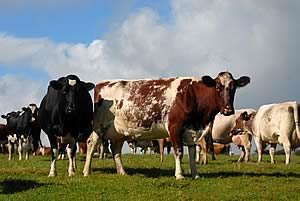 |
|||||||||
|
|||||||||||||||||||
|
|
Dairy Cow Lameness: Vigilance and Prompt Decisive Action Don’t wait to see lameness, go looking for it instead and give the appropriate treatment as soon as you see signs. These are the main conclusions from a nationwide series of workshops about dairy cow lameness staged by leading veterinary practices over the past nine months, according to vet Dave Gilbert from the series sponsor Pfizer Animal Health.
“The early stage of lameness can be a bit like an annoying background noise,” he suggests. “After a time, farmers and their staff may stop noticing it’s there unless it suddenly stops or changes. The milking parlour vacuum pump or a noisy refrigeration compressor are good examples. “One of the main lessons for farmers attending the workshops was how familiarity could lead to acceptance. Unless you’re actively looking at the way cows walk, you can simply get used to seeing them move slightly slower and more gingerly than usual. Over time, this can become the norm. “As a result, investigation may be delayed until the lameness has become more serious and more difficult to treat successfully.” Yet lameness will rarely self-cure, says Mr Gilbert. By identifying and investigating cows when they score 1 (imperfect mobility) on the Dairyco locomotion scale for example, then giving the appropriate treatment, he says it is possible to prevent many of them developing into 2s (impaired), 3s (severely impaired) or even culls. Otherwise, the downsides of lameness can be significant:
To reduce lameness incidence, the workshops considered two types of cause: Non-infectious and infectious. Mr Gilbert says a large part of dealing with the first involves making cows more comfortable: “Better cubicles and walking surfaces, less standing time, timely foot trimming and good nutrition are critical,” he advises. “Then reducing infectious causes—predominantly foul-in-the-foot (FiF) or digital dermatitis—involves better hygiene, cleaner cows, regular foot-bathing, and timely intervention and treatment.” When ‘foul’ is the cause, Dave Gilbert says the recent introduction of a full course of therapy in a single injection offers farmers an easy and effective treatment. One injection of the ceftiofur crystalline free acid-based treatment (trade name, Naxcel Cattle) is active for seven days against FiF pathogens and has a nil milk withdrawal requirement.
|
||||||||||||||||||

|
|
||||||||||||||||||
| home | agri-services | pedigree
pen | news | dairy | beef | machinery BPS | property | organisations | site map |
|||||||||||||||||||


